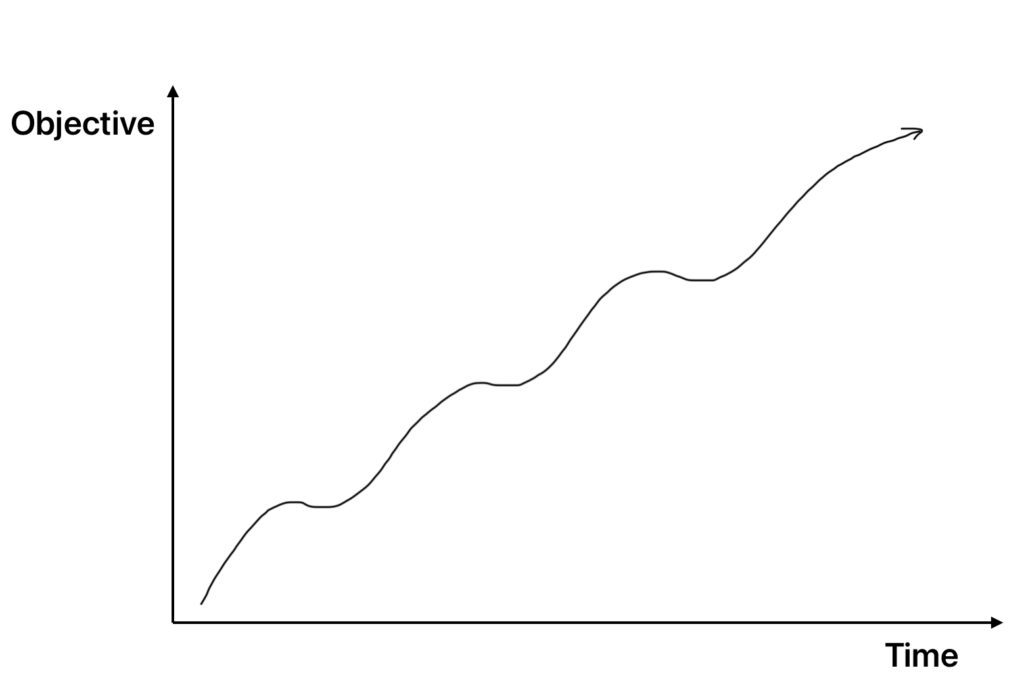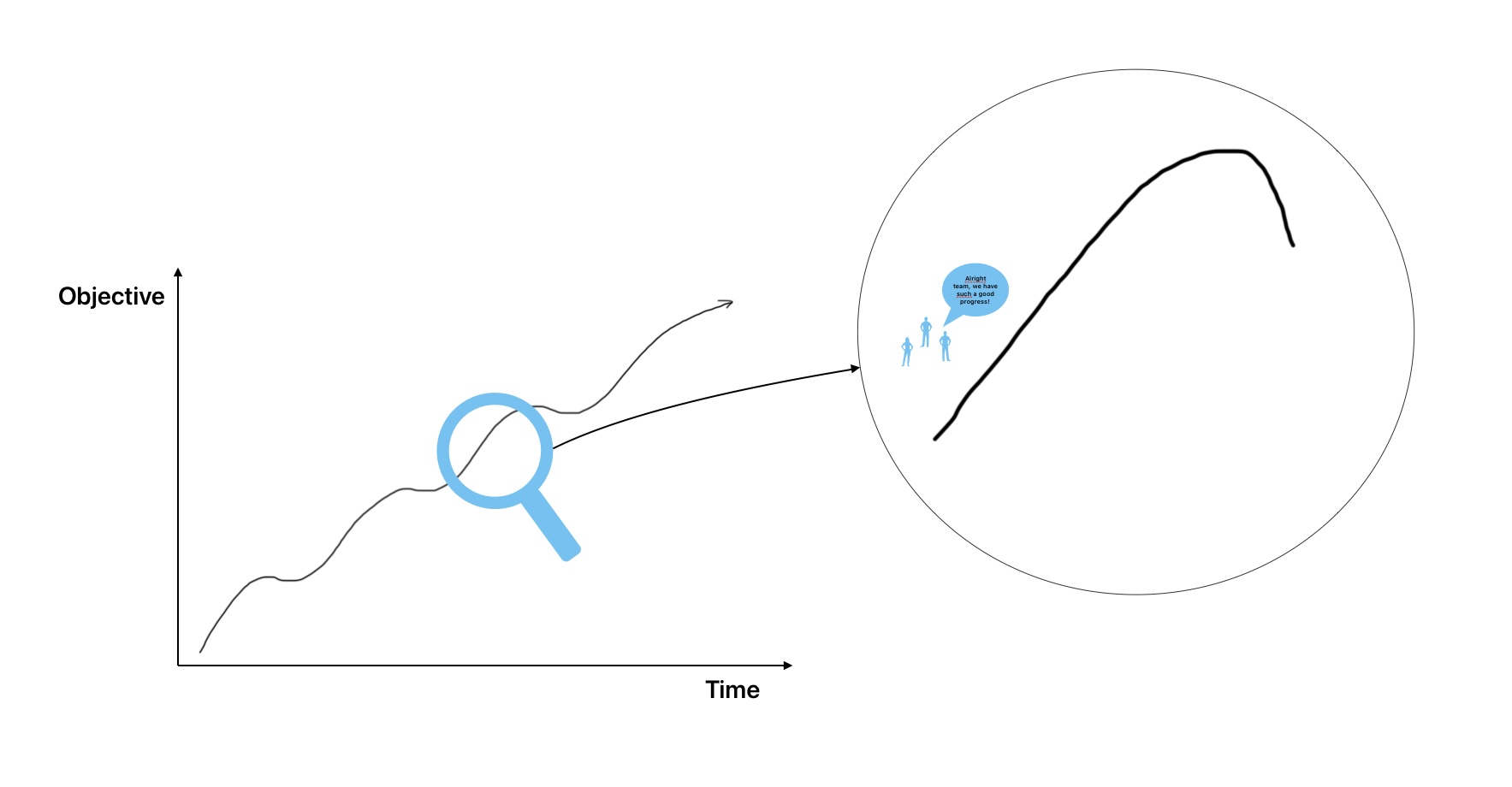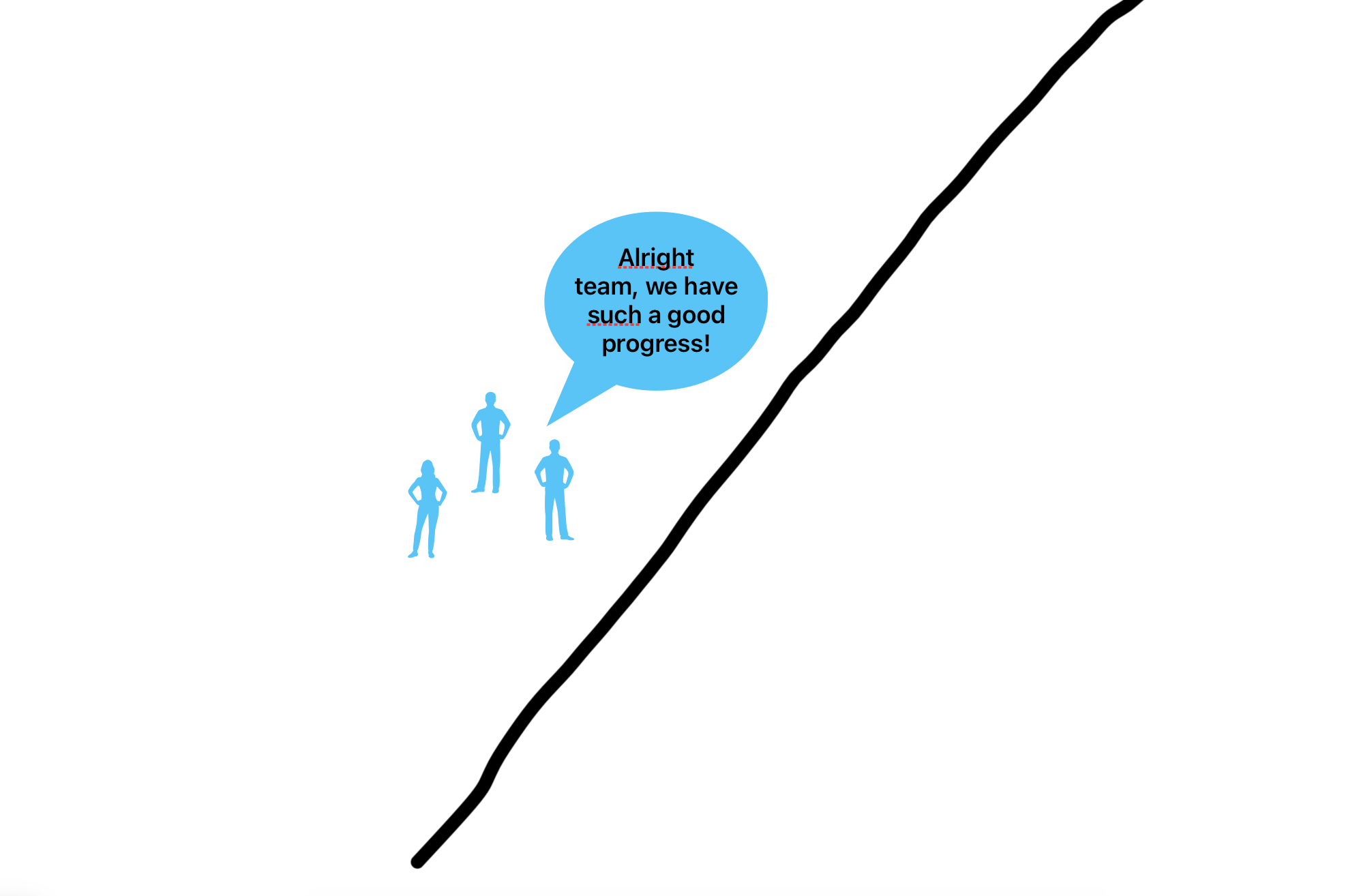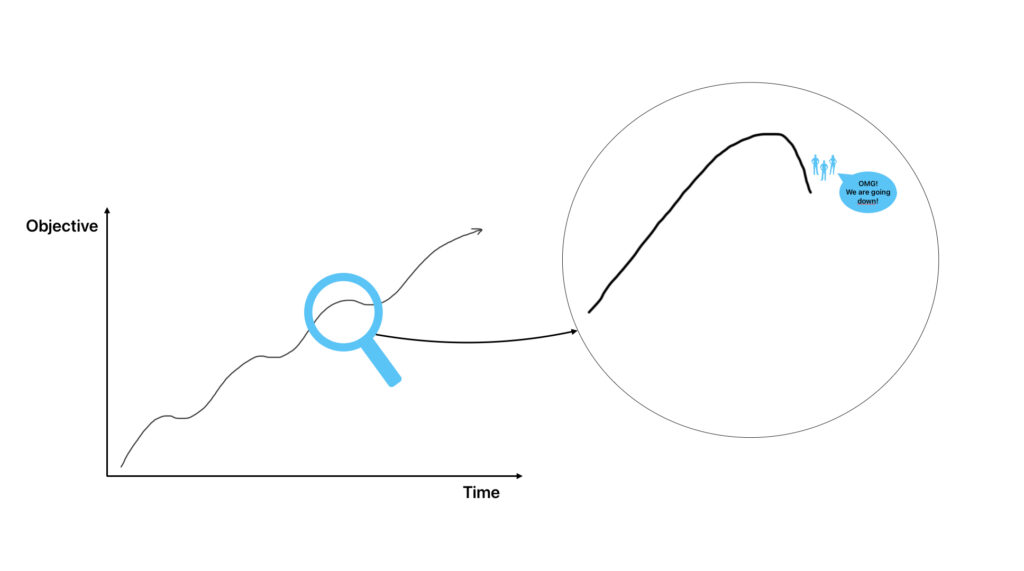In the dynamic world of software engineering, building a successful product is a journey filled with highs and lows.
The road from idea to success is not an easy one, especially from the perspective of a team developing a product, and its morale can be affected by various factors such as customer feedback, the dynamics among members, the relationship with stakeholders, etc. As a Scrum Master, steering your team through challenging iterations is a crucial aspect of ensuring long-term success.
In this article, we’ll explore strategies to manage tough moments and keep your team focused on the bigger picture.

We can observe how a product achieves success (with success being something more or less subjective, individually defined for each product) through a path that is anything but linear or simple.
Now, let’s zoom in on the graph a bit and make some observations.

Okay, let’s zoom in even further.
How do things appear? They seem perfect. The team is going through a period of growth, clarity, and stability. Things are straightforward, and it’s easy to motivate people in these conditions.

Now, let’s zoom in on another timeframe.

Okay, we have a challenging period. Let’s analyze it in detail.

Although we know that in the end the team managed to deliver a successful product, these small moments of decline are crucial and do not feel pleasant for the team, for morale.
So, how do we get the team back on a stable trend?
Embrace Retrospection:
Bad moments are inevitable, but they also present opportunities for growth. Conduct regular retrospective meetings to reflect on what went well, what didn’t, and why. Encourage team members to share their insights openly. This not only fosters a culture of continuous improvement but also helps in identifying patterns and addressing issues at their roots.
Open Communication Channels:
Maintain transparent communication within the team. When facing challenges, it’s crucial to create an environment where team members feel safe expressing their concerns and proposing solutions. Addressing issues promptly and openly fosters trust and solidarity, reinforcing the team’s ability to overcome obstacles together.
Focus on the Vision:
During challenging iterations, it’s easy to lose sight of the bigger picture. Remind your team of the ultimate goal and the positive impact your product aims to achieve. Reconnect them with the vision that initially fueled their enthusiasm. This perspective shift can instill a sense of purpose and motivate the team to push through temporary setbacks.
Celebrate Small Wins:
In the midst of challenges, celebrating small victories becomes even more crucial. Acknowledge and appreciate the team’s achievements, no matter how minor. Recognizing progress, no matter how incremental, reinforces the idea that challenges are part of the journey, and each step forward is a reason to celebrate.
Reassess and Adjust Goals:
Regularly reassess project goals and timelines. If the team consistently faces challenges, consider whether adjustments are needed. It’s crucial to set realistic expectations and pivot when necessary. Flexibility in goal-setting allows the team to adapt to changing circumstances and overcome challenges more effectively.
Maintain a Positive Team Culture:
A positive team culture acts as a buffer during tough times. Foster a supportive environment where team members encourage and uplift each other. Team bonding activities, constructive feedback, and a shared sense of purpose contribute to a resilient and cohesive team that can weather storms together.
As a Scrum Master navigating the intricate landscape of product development, your role in steering the team through challenging iterations is pivotal. By embracing retrospection, fostering open communication, and maintaining a focus on the bigger picture, you’ll empower your team to overcome obstacles and, ultimately, achieve long-term success in developing a remarkable product.



